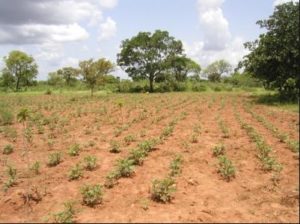The meaning of the term is simple enough: renewing forest cover by planting seeds, seedlings or young trees. But in the context of climate change, the term carries a more loaded meaning. Besides providing shelter and food for millions of species, sustaining biodiversity, and protecting watersheds, trees absorb CO2 from the atmosphere helping to reduce emission of greenhouse gases (GHGs) and to avoid dangerous levels of global warming. The forests act to offset the CO2 emitted from our burning of fossil fuels and other activities.

Of course, cutting down trees releases that CO2 back into the atmosphere, to our detriment.
One of the advantages of reforestation as a GHG mitigation action is that it is much cheaper than alternative steps, such as converting from use of fossil fuels to carbon-free sources of power.
Some further ideas to explore on Reforestation:
For your area, determine whether some trees are better than others in reforestation for fighting climate change.
How much CO2 is absorbed by a hectare (2.47 acres) of forests in your area over a month, a year, a decade.
How much would it cost to reforest a hectare (2.47 acres) of land in your area and how does that cost compare with alternative means of reducing CO2.
Sources:
Intergovernmental Panel on Climate Change (IPCC), “Afforestation, Reforestation, and Deforestation” in Land Use, Land-Use Change and Forestry. bit.ly/1iflA0G
Thomas Schueneman, “The Benefits of Reforestation,” Global Warmng Is Real (22 March 2012). bit.ly/2zT5pCJ
New study finds nature is vital to beating climate change (16 Oct 2017). bit.ly/2xJYRGA
United Nations Department of Economic and Social Affairs, Reforestation: the easiest way to combat climate change (6 Dec 2010). bit.ly/2B7zuN5
See Natural Climate Solutions in Reports section of current (December 2017) issue of www.irishenvironment.com


No comments yet, add your own below